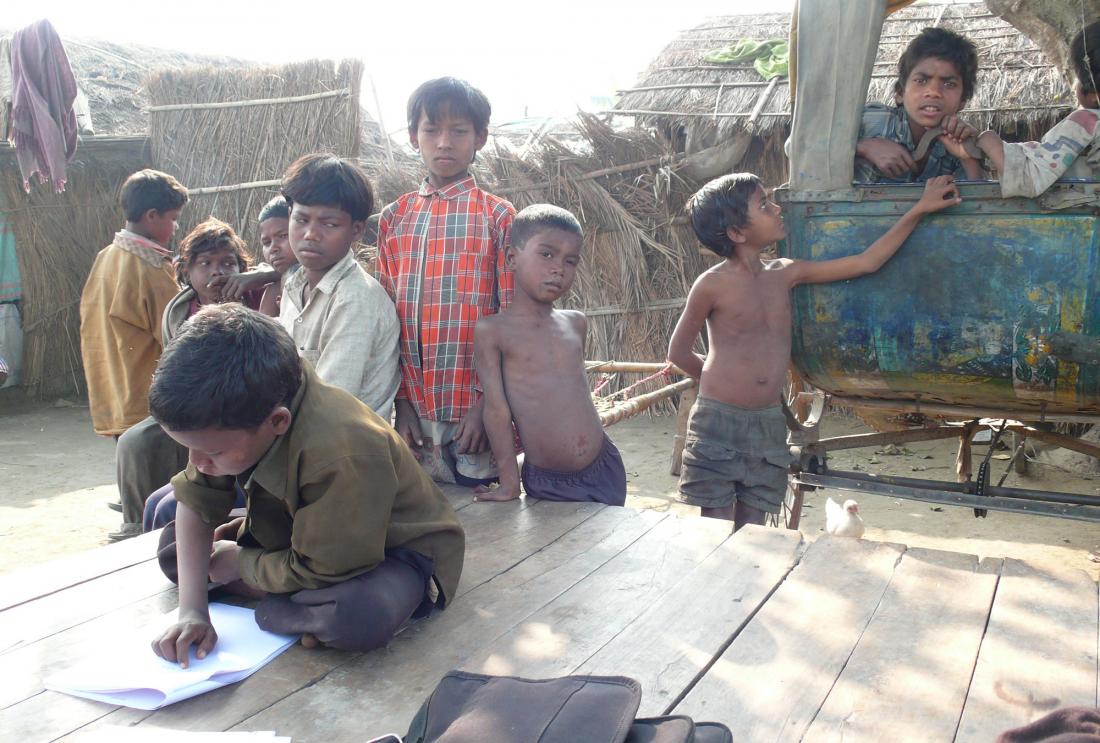A Better Way to Teach Children to Read? Evidence from a Randomized Control Trial
- Teachers
- Student learning
- Recruitment and hiring
- Training
- Community monitoring
Policy issue
The Millennium Development Goals and the Education for All initiatives have placed strong emphasis on the promotion of universal primary education. Yet simply enrolling children is only a first step in educating children in developing countries; the quality of education matters as well. It is well-known that educational quality differs significantly across countries. Since it is especially low in developing countries, programs to improve education quality are crucial in closing the gap between developed and developing countries. Effective methods to teach reading skills are particularly important because there is much evidence showing a strong persistence in reading abilities starting from a young age. Moreover, existing research strongly suggests that learning to read at an early age lays a strong foundation for future academic skills development, suggesting that improvements in early reading programs could yield significant long-term returns. These connections have strong implications for low-income children in particular, because they tend to have home and school environments which are less conducive to early reading development relative to those of higher income children. Therefore, low-income children often develop lower pre-reading abilities which then have strong implications for later reading abilities.
Context of the evaluation
Although enrollment rates have increased significantly in India, a recent countrywide survey of rural children (ASER, 2007) found that only 58.3% of children in fifth grade could read at the second grade level. This study aims to give further insights into this policy issue by analyzing a particular education program that seeks to improve the quality of language instruction for early learners in the slum communities of Mumbai, India. In this particular setting, the quality of language instruction is generally poor and the need to improve existing education models is critical, especially at an early age. The main purpose of the curriculum is to provide basic literacy training to pre-school children, hence laying a foundation for their matriculation to regular primary schools. The pre-school Schishuvachan program is, moreover, a departure from regular Indian teaching styles in that it focuses on comprehension instead of rote memorization and repetition. This is facilitated by teacher-student interaction centered on storytelling and classroom games.

Details of the intervention
The Shishuvachan program was originally designed to supplement balwadi (daycare) programs run by Pratham, the government school system, and other organizations. The program’s main goal is to develop reading and comprehension skills among children aged four to five in preparation for primary school matriculation. In class, teachers engage in seven different activities: pre-reading, story-telling, story-reading, word recognition, letter recognition, barakhadi chart, and unfamiliar text reading.
Recent studies have suggested that the efficacy of educational strategies may vary by educational institution and by type of child. As a result, three separate experiments were conducted over three years designed to evaluate the effects of the program on three different student populations in three different types of institutions:
Experiment 1: 67 Mumbai schools were divided in three research groups. Schools were assigned to receive Shishuvachan methodology training for their instructors, to have a Shishuvachan program implemented on an out-of-school basis in the feeder community, or to receive no intervention at all. In all cases the Shishuvachan program was conducted for one hour a day.
Experiment 2: The second experiment involved testing the techniques in specially designed Shishuvachan classes, independent of any other educational infrastructure. Random assignment was done at the community level. A baseline assessment was conducted amongst students in 138 slum communities in which Pratham operated preschools which had not received the Shishuvachan program. Seventy schools were selected for the treatment group and 68 for the control. The Shishuvachan classes operated independently of existing preschools even in separate locations.
Experiment 3: Finally, in the third year experiment, the effects of implementing the Shishuvachan program on the children for which it was originally designed – preschool children in the Pratham preschool classes – was evaluated. Besides the context, the experiment also differed in the type if information collected – collecting information on parents reaching scores as well as those of the students enrolled in the classes.
Results and policy lessons
The results of this experiment suggest that Pratham’s Shishuvachan early literacy skills development curriculum is a viable strategy for improving the reading skills of pre-school and first grade children in India. In the three experiments used for the evaluation, the program proves robust to several delivery mechanisms, delivering gains of 0.12 to 0.70 standard deviations over the respective control groups. The intervention seems to have proved most effective in the setting for which it was originally intended – pre-schools. The treatment effect in these institutions is 0.7 standard deviations overall, an effect that is larger than in either of the other institutions.
Comparing the different implementation strategies, this study shows the greatest gains when the program is a supplement to existing language training and among children with the lowest initial performance or whose parents are least able to supplement their classroom studies. The in-school intervention of year one demonstrated a gain of 0.26 standard deviations compared to a 0.55 standard deviation gain of the out-of-school intervention. Providing Shishuvachan as a complement to school curricula rather than as a substitute has a significantly more positive effect on student scores. The community based intervention of year two generated an insignificant increase in normalized score: 0.12 standard deviations for the entire community, 0.44 to 0.53 standard deviations for participating students.

